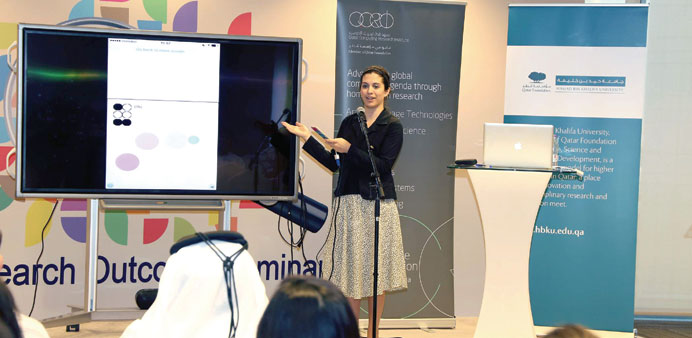The Qatar Computing Research Institute (QCRI), a specialised national research institute of Hamad Bin Khalifa University has developed a custom keyboard for iOS that enables eyes-free, one-handed typing based on Braille and is suitable for both Arabic-speaking and English-speaking users.
The BrailleEasy keyboard was launched by QCRI last Thursday alongside representatives of Qatar Social and Cultural Centre for the Blind (QSCCB), Al Noor Institute for the Blind, and Mada (Qatar Assistive Technology Centre), each of which played an important role in the development of the application.
The app helps the visually-impaired type quickly on touch-screen devices, a process that can otherwise be very slow.
Although operating systems offer basic accessibility options that help the visually impaired navigate through menus on devices, typing still remains very slow on touch-screen devices. Since the end of 2014, iOS has offered a Braille-like keyboard that can speed up typing considerably. However, it requires users to type with both hands.
QCRI developed a custom keyboard that combines the comfort of one-handed typing with the speed of two-handed Braille-like typing. It is based on the original two-handed Braille writing system but has been transformed to enable one-handed typing. With a simple adaption of transforming two-handed Brailling into two gestures, users can quickly learn how to use the BrailleEasy keyboard.
“Smartphones and increasingly smartwatches are widely used in our day-to-day communication, which mostly is text-based. For sighted people these devices are easy to use, but for the blind this is not the case. Developing this Brailling app in close collaboration with the local community has been a very rewarding experience,” commented Dr Stephan Vogel, research director of Arabic Research Technologies at QCRI.
Barbara ?epic, the main developer of the app, said: “Since it has primarily been developed for visually impaired users, the keyboard completely discards any kind of keys and even allows hand movements while typing. The keyboard also offers error correction.”
“It will be very useful for blind users in Qatar, but also for blind people around the world. It is particularly important for those blind people who only have the use of one hand, as they would otherwise have been unable to communicate using touchscreen technology,” noted Faisal Mohamed al-Kooheji, chairman of QSCCB.
The current version of BrailleEasy and its tutoring application run on iOS 8.0 or higher, are fully compatible with VoiceOver (Apple’s accessibility support for visually impaired), and already support English and Arabic.
Dr Ahmed Elmagarmid, executive director at QCRI, said: “This type of research and its associated outcomes speak directly to what I am continually asking our researchers. BrailleEasy enables visually-impaired people to connect more easily, and in a richer way, with society and their environment.”

Barbara Sepic, giving a demonstration of the new device.
